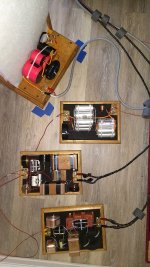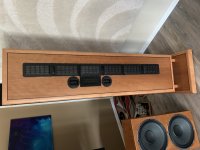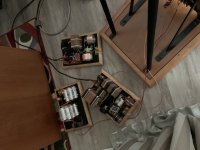Yep. Well, of course Phil is retired. He could clearly have gotten something like the 20.7s with his budget. Haven't heard these yet, but while having some similarities, they should also sound significantly different, the Mags being true lines, Phils being essentially point sources, with a quasi line midbass section, too short to develop true cylindrical wavefronts.
Plus the voltage sensitivity will be well north of 95db, unlike the 86db/4 ohm Maggies, so effectively around 83db/watt. Not something I would drive with his McIntosh tube amp. If he did it correctly (and it sounds like he did), the cardioid bass bins would also kill the Maggie in that area, punch depth and dynamics. And finally, those Brad creation frames appear to put Maggies to shame in terms of structural rigidity, while also having a gorgeous custom finish.
Proof will be in the pudding of course, different strokes for different folks.
cheers,
AJ
We shall see. Looking forward to seeing how he handles driver integration and time alignment, among other challenges. Looking forward to hearing them.
Sent from my iPhone using Tapatalk



